A.F. Stewart's Blog, page 40
August 12, 2020
Drabble Wednesday: Zombie Cows
Welcome to Drabble Wednesday for this week as we begin the Zombie Cows Saga… Zombie Cows “Do you think they would eat human brains?”“What?” I looked up from the program code I was fixing and stared at Frankie.“The Zombie Cows. Do you think they...
Published on August 12, 2020 05:00
August 5, 2020
Drabble Wednesday: Love and Monsters
After a break last week, Drabble Wednesday returns with more virtual adventures of Frankie and Joni. Monster Combat? Stupid Frankie and his stupid monkey.Grumbling under my breath I tossed a large bag of monkey poo into the incinerator. If the darnthing wasn’t so good...
Published on August 05, 2020 05:00
July 22, 2020
Drabble Wednesday: Ghouls and Monkeys
This week’s instalment of the Virtual Adventures of Frankie and Joni. Ghouls vs. Zombies The door slammed shut just in time. I leaned against the titan-steel door listening to sea ghouls shrieking on the other side. Frankie stood next to me, wheezing.“How did we...
Published on July 22, 2020 06:00
July 15, 2020
Drabble Wednesday: Bring on the Ghouls
A bit late today, but technically it’s still Wednesday. Here are the next instalments of the Virtual Adventures of Frankie and Joni. The Dimension That Ate Thursday I blame it all on Frankie. I just did what he said, and pushed the shiny red...
Published on July 15, 2020 16:51
July 8, 2020
Drabble Wednesday: Game Time
Drabble Wednesday is back with more wacky adventures of Frankie and Joni. For the Birds “Who shot the robin? Not I.” “Shhh, they’ll hear you.” I nudged Frankie and peeked out from behind the virtual bushes. No sign of them. “What possessed you to...
Published on July 08, 2020 04:57
July 3, 2020
Flash Fiction Friday: Salt Wind and Bones
Wednesday was a holiday here in Canada, plus I got a bit distracted with the start of Camp NaNoWriMo, which is why Drabble Wednesday was absent this week. But here is Flash Fiction Friday, with a short sea tale. Salt Wind and Bones The...
Published on July 03, 2020 10:22
June 26, 2020
Flash Fiction Friday: A Villain’s Work is Never Done
Welcome to my first Flash Fiction Friday! Today I have a short humorous tale of epic fantasy. A behind the scenes look at running a kingdom. Image by TenebrisCilva from Pixabay A Villain’s Work is Never Done “I am Rathnor! Scourge of Alayria!” The...
Published on June 26, 2020 05:35
July 10, 2018
The Dark Archer Blog Tour: A Guest Post by Robert Cano
Today we join the blog tour for the new dark fantasy release, The Dark Archer by Robert Cano, with a look at the book and a delightful guest post by the author. Enjoy!
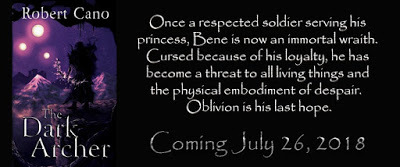
The Dark Archer by Robert Cano
~The light had no equal in this place, no balance with which to suffer the loss of day, and she wondered about the nighttime. Is this why the stars were crying?~
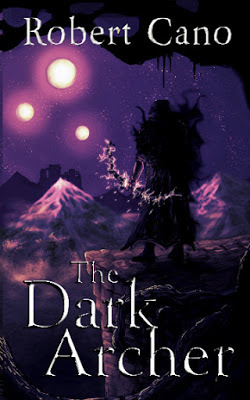
All he wanted was the safety of his princess. What he received was eternal torment. Bereft of a soul, a wraith who should have no ties to humanity, Bene wants nothing more than release from his twisted existence. Trapped between life and nothingness, he hopes to reclaim his soul and find the death he so desperately desires.Bene finds rare solace in the company of Feorin, a satyr war hero who chose exile over continuing the centuries long war with the Fae. He doesn't look at Bene with fear or contempt, but rather hope. If a wraith can find a path to redemption, perhaps he could as well…
The Dark Archer is available for pre-order at Amazon. Also available at Smashwords and at Amazon Canada
It releases July 26th, 2018.
~He felt an overwhelming sense of dread at the prospect of what his life had become in such a short time. Once in service to the greatest kingdom in the world, he was now a literal nothing with a physical form.~
Darkness by Robert Cano
The worlds we have all come to love and know, whether based in our own world, or based in some form of fantasy setting, require some level of darkness; something antagonistic, to counter our favorite protagonists. What constitutes darkness may change with every tale, and we are required to ask again: What is light? What is darkness? Is there only pure evil or pure good to be found in either? Over the last century, or so, we have seen a trend where darkness is not the result of pure evil, but of the inconsistencies in the human soul. Today fantasy gives us an opportunity to explore the human condition in magical and fantastical ways, but make no mistake, we are still exploring humanity, even if wearing another face.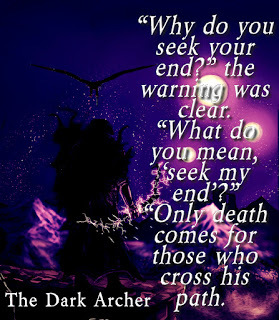 When we look at authors like Tolkien, or perhaps Lovecraft, with his Cthulu mythos and the world surrounding that, we see Big Bads. Pure evil is in the form of something tangible, with honor strewn throughout the world, found in the people, in the little things. Gandalf, in The Hobbit, said, “Some believe it is only great power that can hold evil in check, but that is not what I have found. It is the small everyday deeds of ordinary folk that keep the darkness at bay. Small acts of kindness and love. Why Bilbo Baggins? Perhaps because I am afraid, and he gives me courage.”And while there is a profound truth to be found in this statement, experience in the world teaches something quite different, doesn’t it? What we find instead is that the evil resides within all of us, that the horrors of the world are of our own making, and not that of some devil or demons, that these demons are, in fact, our own, being manifested through the hells we have been made to endure as we traverse this life. Joseph Conrad once said, “The belief in a supernatural source of evil is not necessary, men alone are quite capable of every wickedness.” Regardless of one’s personal belief system, any time spent on Earth will demonstrate the truth of this. The greatest horrors and atrocities in the history of mankind were not done by the hand of God, perhaps in the name of one or more, but never by their hand. Always it was at the hand of mankind.In creating the darkness of a fantasy, we need go no further than the darkness of the human heart. I have long believed that the beauty of Tolkien’s work was found in the light vs dark dichotomy. In the idea that everyone is inherently good, and the evil of the world is found externally, from a specific source beyond ourselves. That our evil can be traced back to the influence of that source. However, there is a silver lining to be found in the evil of humanity, for then our tormentors wear a face we can fight against, but in that same vein, our tormentors can be anyone.So how do we incorporate old world idealism with contemporary shifts in writing? The idealism is no longer found in the light, but in the individual, within the actions one chooses to enact on their world, in the moment. But herein also lies the darkness. A choice, even a well-meaning choice, can easily lead down a path from which there is no redemption. These are the ideas grounded in realism. I believe there are truly honorable people in the world, and I think George R. R. Martin does an incredible job of embodying this with Ned Stark’s character in the series, A Song of Ice and Fire, in which Lord Stark does what he believes is right, regardless of the circumstances. But, there is a price for honor. And usually that price is high. The belief in one’s self actions as being that of utmost importance, or the idea that our role in this world is to embody the ideal, is something we see even in our current situation in the United States, and indeed much of the world.The ‘us vs them’ mentality is spawned not from wrongness, but absolute belief in self, which is then worsened by surrounding oneself with others who think along similar lines. The problem, then, is not light vs darkness, but a perceived light pitted against another perceived light, which are both also perceived darkness, from another’s point of view. Perception is everything.When working on my stories I am keen to incorporate these aspects of thought and ideas into every piece of the proverbial puzzle. It is important to question whether darkness is evil, or perhaps it is merely darkness. Maybe darkness is a comfort: a source of something greater. At the end, in my mind at least, the construct of good and evil is humanity’s attempt to explain away the evil within us all, with light and dark being of religious origin.We have always been afraid of what we cannot see or understand. Darkness is the purest example. We fear new places, new things, we are frightened of the unknown. Perhaps it is from this deep-seated fear that we find darkness likened to evil so often, especially in early texts…and this has bled over into today’s world, where we still hold on to superstitions en masse. However, I think in today’s world, people are less inclined to believe the absolutes, and this has led to a desire to read something more realistic.
When we look at authors like Tolkien, or perhaps Lovecraft, with his Cthulu mythos and the world surrounding that, we see Big Bads. Pure evil is in the form of something tangible, with honor strewn throughout the world, found in the people, in the little things. Gandalf, in The Hobbit, said, “Some believe it is only great power that can hold evil in check, but that is not what I have found. It is the small everyday deeds of ordinary folk that keep the darkness at bay. Small acts of kindness and love. Why Bilbo Baggins? Perhaps because I am afraid, and he gives me courage.”And while there is a profound truth to be found in this statement, experience in the world teaches something quite different, doesn’t it? What we find instead is that the evil resides within all of us, that the horrors of the world are of our own making, and not that of some devil or demons, that these demons are, in fact, our own, being manifested through the hells we have been made to endure as we traverse this life. Joseph Conrad once said, “The belief in a supernatural source of evil is not necessary, men alone are quite capable of every wickedness.” Regardless of one’s personal belief system, any time spent on Earth will demonstrate the truth of this. The greatest horrors and atrocities in the history of mankind were not done by the hand of God, perhaps in the name of one or more, but never by their hand. Always it was at the hand of mankind.In creating the darkness of a fantasy, we need go no further than the darkness of the human heart. I have long believed that the beauty of Tolkien’s work was found in the light vs dark dichotomy. In the idea that everyone is inherently good, and the evil of the world is found externally, from a specific source beyond ourselves. That our evil can be traced back to the influence of that source. However, there is a silver lining to be found in the evil of humanity, for then our tormentors wear a face we can fight against, but in that same vein, our tormentors can be anyone.So how do we incorporate old world idealism with contemporary shifts in writing? The idealism is no longer found in the light, but in the individual, within the actions one chooses to enact on their world, in the moment. But herein also lies the darkness. A choice, even a well-meaning choice, can easily lead down a path from which there is no redemption. These are the ideas grounded in realism. I believe there are truly honorable people in the world, and I think George R. R. Martin does an incredible job of embodying this with Ned Stark’s character in the series, A Song of Ice and Fire, in which Lord Stark does what he believes is right, regardless of the circumstances. But, there is a price for honor. And usually that price is high. The belief in one’s self actions as being that of utmost importance, or the idea that our role in this world is to embody the ideal, is something we see even in our current situation in the United States, and indeed much of the world.The ‘us vs them’ mentality is spawned not from wrongness, but absolute belief in self, which is then worsened by surrounding oneself with others who think along similar lines. The problem, then, is not light vs darkness, but a perceived light pitted against another perceived light, which are both also perceived darkness, from another’s point of view. Perception is everything.When working on my stories I am keen to incorporate these aspects of thought and ideas into every piece of the proverbial puzzle. It is important to question whether darkness is evil, or perhaps it is merely darkness. Maybe darkness is a comfort: a source of something greater. At the end, in my mind at least, the construct of good and evil is humanity’s attempt to explain away the evil within us all, with light and dark being of religious origin.We have always been afraid of what we cannot see or understand. Darkness is the purest example. We fear new places, new things, we are frightened of the unknown. Perhaps it is from this deep-seated fear that we find darkness likened to evil so often, especially in early texts…and this has bled over into today’s world, where we still hold on to superstitions en masse. However, I think in today’s world, people are less inclined to believe the absolutes, and this has led to a desire to read something more realistic.
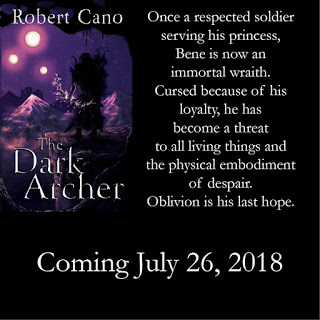
For the world of The Dark Archer, I created the concept of darklings, or those borne of dark magic. They are often relegated to evil by the other races of the world, but they are what they are, and nothing else. It is often said amongst writers that the antagonist is the hero in their version of the tale, an important concept to remember when trying to create believable characters. The darklings of this world include banshees, wraiths, and the Inklet (humanoid draconids). The darkness in each of these species comes not from an existential evil, but from how their needs contrast with those of the rest of the world.Hunger, that painfully stabbing hunger that overrides all functions of thought or reason…this is what a wraith is. It will feed without pity, or remorse, or compassion, for it lacks all of these. So then, is the wraith the antagonist? Is it the conflict? What is its purpose? In lore, wraiths were pure evil, intent on stealing the souls of their victims, and this is where I pulled the idea of an entity without a soul. For if you have lost something, the ultimate hope would be to regain it. This speaks to the conflict inherent in everyday life. Whether the conflict is internal, or against nature itself, or between people (usually a mix of all three), our characters should reflect this fundamental element of life. Struggles come in many forms, and exploring these struggles creates the most relatable characters, and isn’t that what we want? To be able to see ourselves in the characters we love? Or maybe we love these characters because we see ourselves in them…and not just the good aspects.It is my duty as an author to keep these little life lessons in mind, close to heart, and to use them to the benefit of my readers, not only into the worldbuilding aspects, but into the characters themselves: into both the interactions between the characters and they with the world in which they find themselves. Life is for the living, but in this world, it is also for those not willing to quite give up just yet. For within the darkest times there is yet hope. And perhaps that is what hope is – a means of continuing even when the world has given up, even if forlorn and bereft of any real reason for hope, maybe, just maybe, it’s that perseverance that separates the hero, whether seen as good or evil, from the common man or the antagonist. Or perhaps the protagonist’s worst enemy isn’t the antagonist at all, but his or herself… After all, our greatest enemy is always ourselves.
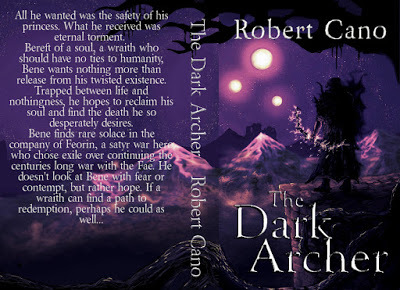
“Bene was not always a wraith, becoming a darkling was forced on him. He was once a captain of the guard for a kingdom, in service to his princess who betrayed his service and allowed him to suffer the greatest suffering known to the world.”

The Dark Archer by Robert Cano
~The light had no equal in this place, no balance with which to suffer the loss of day, and she wondered about the nighttime. Is this why the stars were crying?~

All he wanted was the safety of his princess. What he received was eternal torment. Bereft of a soul, a wraith who should have no ties to humanity, Bene wants nothing more than release from his twisted existence. Trapped between life and nothingness, he hopes to reclaim his soul and find the death he so desperately desires.Bene finds rare solace in the company of Feorin, a satyr war hero who chose exile over continuing the centuries long war with the Fae. He doesn't look at Bene with fear or contempt, but rather hope. If a wraith can find a path to redemption, perhaps he could as well…
The Dark Archer is available for pre-order at Amazon. Also available at Smashwords and at Amazon Canada
It releases July 26th, 2018.
~He felt an overwhelming sense of dread at the prospect of what his life had become in such a short time. Once in service to the greatest kingdom in the world, he was now a literal nothing with a physical form.~
Darkness by Robert Cano
The worlds we have all come to love and know, whether based in our own world, or based in some form of fantasy setting, require some level of darkness; something antagonistic, to counter our favorite protagonists. What constitutes darkness may change with every tale, and we are required to ask again: What is light? What is darkness? Is there only pure evil or pure good to be found in either? Over the last century, or so, we have seen a trend where darkness is not the result of pure evil, but of the inconsistencies in the human soul. Today fantasy gives us an opportunity to explore the human condition in magical and fantastical ways, but make no mistake, we are still exploring humanity, even if wearing another face.
 When we look at authors like Tolkien, or perhaps Lovecraft, with his Cthulu mythos and the world surrounding that, we see Big Bads. Pure evil is in the form of something tangible, with honor strewn throughout the world, found in the people, in the little things. Gandalf, in The Hobbit, said, “Some believe it is only great power that can hold evil in check, but that is not what I have found. It is the small everyday deeds of ordinary folk that keep the darkness at bay. Small acts of kindness and love. Why Bilbo Baggins? Perhaps because I am afraid, and he gives me courage.”And while there is a profound truth to be found in this statement, experience in the world teaches something quite different, doesn’t it? What we find instead is that the evil resides within all of us, that the horrors of the world are of our own making, and not that of some devil or demons, that these demons are, in fact, our own, being manifested through the hells we have been made to endure as we traverse this life. Joseph Conrad once said, “The belief in a supernatural source of evil is not necessary, men alone are quite capable of every wickedness.” Regardless of one’s personal belief system, any time spent on Earth will demonstrate the truth of this. The greatest horrors and atrocities in the history of mankind were not done by the hand of God, perhaps in the name of one or more, but never by their hand. Always it was at the hand of mankind.In creating the darkness of a fantasy, we need go no further than the darkness of the human heart. I have long believed that the beauty of Tolkien’s work was found in the light vs dark dichotomy. In the idea that everyone is inherently good, and the evil of the world is found externally, from a specific source beyond ourselves. That our evil can be traced back to the influence of that source. However, there is a silver lining to be found in the evil of humanity, for then our tormentors wear a face we can fight against, but in that same vein, our tormentors can be anyone.So how do we incorporate old world idealism with contemporary shifts in writing? The idealism is no longer found in the light, but in the individual, within the actions one chooses to enact on their world, in the moment. But herein also lies the darkness. A choice, even a well-meaning choice, can easily lead down a path from which there is no redemption. These are the ideas grounded in realism. I believe there are truly honorable people in the world, and I think George R. R. Martin does an incredible job of embodying this with Ned Stark’s character in the series, A Song of Ice and Fire, in which Lord Stark does what he believes is right, regardless of the circumstances. But, there is a price for honor. And usually that price is high. The belief in one’s self actions as being that of utmost importance, or the idea that our role in this world is to embody the ideal, is something we see even in our current situation in the United States, and indeed much of the world.The ‘us vs them’ mentality is spawned not from wrongness, but absolute belief in self, which is then worsened by surrounding oneself with others who think along similar lines. The problem, then, is not light vs darkness, but a perceived light pitted against another perceived light, which are both also perceived darkness, from another’s point of view. Perception is everything.When working on my stories I am keen to incorporate these aspects of thought and ideas into every piece of the proverbial puzzle. It is important to question whether darkness is evil, or perhaps it is merely darkness. Maybe darkness is a comfort: a source of something greater. At the end, in my mind at least, the construct of good and evil is humanity’s attempt to explain away the evil within us all, with light and dark being of religious origin.We have always been afraid of what we cannot see or understand. Darkness is the purest example. We fear new places, new things, we are frightened of the unknown. Perhaps it is from this deep-seated fear that we find darkness likened to evil so often, especially in early texts…and this has bled over into today’s world, where we still hold on to superstitions en masse. However, I think in today’s world, people are less inclined to believe the absolutes, and this has led to a desire to read something more realistic.
When we look at authors like Tolkien, or perhaps Lovecraft, with his Cthulu mythos and the world surrounding that, we see Big Bads. Pure evil is in the form of something tangible, with honor strewn throughout the world, found in the people, in the little things. Gandalf, in The Hobbit, said, “Some believe it is only great power that can hold evil in check, but that is not what I have found. It is the small everyday deeds of ordinary folk that keep the darkness at bay. Small acts of kindness and love. Why Bilbo Baggins? Perhaps because I am afraid, and he gives me courage.”And while there is a profound truth to be found in this statement, experience in the world teaches something quite different, doesn’t it? What we find instead is that the evil resides within all of us, that the horrors of the world are of our own making, and not that of some devil or demons, that these demons are, in fact, our own, being manifested through the hells we have been made to endure as we traverse this life. Joseph Conrad once said, “The belief in a supernatural source of evil is not necessary, men alone are quite capable of every wickedness.” Regardless of one’s personal belief system, any time spent on Earth will demonstrate the truth of this. The greatest horrors and atrocities in the history of mankind were not done by the hand of God, perhaps in the name of one or more, but never by their hand. Always it was at the hand of mankind.In creating the darkness of a fantasy, we need go no further than the darkness of the human heart. I have long believed that the beauty of Tolkien’s work was found in the light vs dark dichotomy. In the idea that everyone is inherently good, and the evil of the world is found externally, from a specific source beyond ourselves. That our evil can be traced back to the influence of that source. However, there is a silver lining to be found in the evil of humanity, for then our tormentors wear a face we can fight against, but in that same vein, our tormentors can be anyone.So how do we incorporate old world idealism with contemporary shifts in writing? The idealism is no longer found in the light, but in the individual, within the actions one chooses to enact on their world, in the moment. But herein also lies the darkness. A choice, even a well-meaning choice, can easily lead down a path from which there is no redemption. These are the ideas grounded in realism. I believe there are truly honorable people in the world, and I think George R. R. Martin does an incredible job of embodying this with Ned Stark’s character in the series, A Song of Ice and Fire, in which Lord Stark does what he believes is right, regardless of the circumstances. But, there is a price for honor. And usually that price is high. The belief in one’s self actions as being that of utmost importance, or the idea that our role in this world is to embody the ideal, is something we see even in our current situation in the United States, and indeed much of the world.The ‘us vs them’ mentality is spawned not from wrongness, but absolute belief in self, which is then worsened by surrounding oneself with others who think along similar lines. The problem, then, is not light vs darkness, but a perceived light pitted against another perceived light, which are both also perceived darkness, from another’s point of view. Perception is everything.When working on my stories I am keen to incorporate these aspects of thought and ideas into every piece of the proverbial puzzle. It is important to question whether darkness is evil, or perhaps it is merely darkness. Maybe darkness is a comfort: a source of something greater. At the end, in my mind at least, the construct of good and evil is humanity’s attempt to explain away the evil within us all, with light and dark being of religious origin.We have always been afraid of what we cannot see or understand. Darkness is the purest example. We fear new places, new things, we are frightened of the unknown. Perhaps it is from this deep-seated fear that we find darkness likened to evil so often, especially in early texts…and this has bled over into today’s world, where we still hold on to superstitions en masse. However, I think in today’s world, people are less inclined to believe the absolutes, and this has led to a desire to read something more realistic.

For the world of The Dark Archer, I created the concept of darklings, or those borne of dark magic. They are often relegated to evil by the other races of the world, but they are what they are, and nothing else. It is often said amongst writers that the antagonist is the hero in their version of the tale, an important concept to remember when trying to create believable characters. The darklings of this world include banshees, wraiths, and the Inklet (humanoid draconids). The darkness in each of these species comes not from an existential evil, but from how their needs contrast with those of the rest of the world.Hunger, that painfully stabbing hunger that overrides all functions of thought or reason…this is what a wraith is. It will feed without pity, or remorse, or compassion, for it lacks all of these. So then, is the wraith the antagonist? Is it the conflict? What is its purpose? In lore, wraiths were pure evil, intent on stealing the souls of their victims, and this is where I pulled the idea of an entity without a soul. For if you have lost something, the ultimate hope would be to regain it. This speaks to the conflict inherent in everyday life. Whether the conflict is internal, or against nature itself, or between people (usually a mix of all three), our characters should reflect this fundamental element of life. Struggles come in many forms, and exploring these struggles creates the most relatable characters, and isn’t that what we want? To be able to see ourselves in the characters we love? Or maybe we love these characters because we see ourselves in them…and not just the good aspects.It is my duty as an author to keep these little life lessons in mind, close to heart, and to use them to the benefit of my readers, not only into the worldbuilding aspects, but into the characters themselves: into both the interactions between the characters and they with the world in which they find themselves. Life is for the living, but in this world, it is also for those not willing to quite give up just yet. For within the darkest times there is yet hope. And perhaps that is what hope is – a means of continuing even when the world has given up, even if forlorn and bereft of any real reason for hope, maybe, just maybe, it’s that perseverance that separates the hero, whether seen as good or evil, from the common man or the antagonist. Or perhaps the protagonist’s worst enemy isn’t the antagonist at all, but his or herself… After all, our greatest enemy is always ourselves.

“Bene was not always a wraith, becoming a darkling was forced on him. He was once a captain of the guard for a kingdom, in service to his princess who betrayed his service and allowed him to suffer the greatest suffering known to the world.”
Published on July 10, 2018 05:00
May 31, 2018
Interview With Author Shane Wilson
Today I have another interview, this time with fantasy author Shane Wilson. He stops by to chat about his writing and his latest novel, The Smoke in His Eyes. Enjoy.
An Interview With Shane Wilson
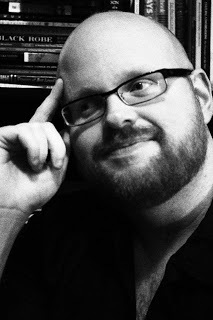
Why don’t you begin by sharing a little about yourself?
Sure! I never really know where to start with this and say something interesting, but we will give it a shot. My brain has always had me in interesting situations. I put myself through college as a mobile disc jockey—DJ Biscuit. I directed a play for a local theater in college—Neil Simon’ Fools. I started publishing short stories and poetry in graduate school (shout out to Valdosta State University), and my first low-fantasy/ magical realism novel, A Year Since the Rain, was published by a small press in 2016.
Why did you decide to write in the low-fantasy/ magical realism genre?
I’ve been thinking a lot about this lately because of my coursework in my MFA program. Low-fantasy and magical realism are not genres that get a ton of buzz right now. All of the low-fantasy genres are getting beat up by our big brother, Fantasy (with a capital F). Hard fantasy is having a big moment right now—Lord of the Rings is getting another adaptation and Game of Thrones is one of the most successful shows on television right now. The one low-fantasy genre that is doing well in publishing right now seems to be urban fantasy. There is clearly a cultural desire for fantastical stories. That being said, I suppose I started writing the particular brand of fantasy that I write because of what I read in graduate school. I had a professor who was really into reading and teaching Salman Rushdie novels. I ended writing about his novels Midnight’s Children and Furyfor my Master’s thesis. I was just exposed to a lot of magical realism, and I studied that aesthetic and the kinds of stories that genre can tell, and I fell in love.
What do you enjoy most about writing in the low-fantasy/ magical realism genre?
The thing that drew me to the genre to begin with was the hybridity of the genre. I have always loved gritty realism, and I have also always enjoyed more speculative works. I grew up on Star Wars and Goosebumps. Finding a genre, like magical realism, where gritty realism intersects with the magical and mystical was a revelation. I love the idea that I can tell stories about people and places that feel very real, and then I can plunge those people and places into something other-worldly. I think it allows me to get at some interesting things about human nature that I couldn’t get to in a story that was all the way in one genre or the other.
Could you tell us a bit about your latest book?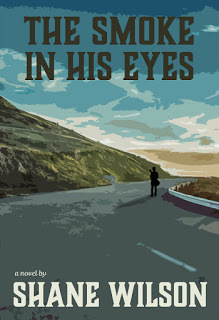
Certainly! The Smoke in His Eyes is about this young guy—a musical prodigy who is technically proficient at guitar and who also has some intense visions that seem to strike at random. He starts making music with this girl in one of his classes at the university. She pushes him to write something original, which ultimately highlights his insecurities. The two musicians go their separate ways and he meets this mysterious visual artist who teaches him how to take his wild and unruly visions and translate them into art.
Why did you write this book? What was your inspiration?
The inspiration for the novel was publishing my first novel. My first novel was largely an accident, but when it was done, I thought I should probably see if someone might like it, so I started to pitch it and I found a publisher for it. I will forever be indebted to the guys at Snow Leopard Publishing for giving my little story a chance. It gave me confidence and assurance.But the longer it was out, the more I started to wonder: who am I? I’m just some guy who sat at a computer long enough to write a novel. Anybody could do that if they wanted to, right? So what makes me special? And what makes my book special enough to assume that anyone would actually want to read it? From that line of questioning, I arrived at the inspiration for The Smoke in His Eyes. The inspiration, then, was wondering about art and artists and why we feel the compulsion to create and ultimately share that creation with the world. The book explores the different reasons people make art and the different places we derive our inspirations.
What did you enjoy most about writing your book?
I love the journey of the writing, ya know? I love to sit down and see the blank page. It’s terrifying, for sure, but it’s also a really exciting time. I like the experience of the story. I am a pantser for sure—I do very minimal plotting before things get started. I know who my protagonist is, and I have some idea about central plot and the decisions he or she will have to make, and I have some idea about where I want to end up. The stuff in the middle is usually a surprise, and it’s a journey that I thoroughly enjoy taking.
What advice would you give beginning writers?
One of the most common reactions to someone finding out that I’m a writer is: “Oh, yeah! I’ve always wanted to write a book.” I’m sure you get that, too. I think we all do. What I tell those people is the same thing that I tell anybody else who I think might actually be serious about wanting to write a book: write it. If you want to write, write. That is the only advice I can give, and it is advice that has been given a million other times in more interesting ways by people more qualified than me. But you either have a story you believe in or you don’t. Park your ass in the chair and write. None of us really know what we are doing our first time at bat. The only way to figure it out is to try.
What do you like to do when you're not writing? Any hobbies?
When I first started writing this book, I decided to try my hand at the guitar. I had never played before. I mean, I played piano when I was a kid, but I didn’t stick with it the way I should have. But I had this idea for a guitarist. I decided I needed to know at least something about what playing guitar felt like before I wrote about it and came off like some jackass who didn’t know what he was talking about. So, I started teaching myself guitar. I’m still not an expert, to be sure, but I’ve really enjoyed it. I play some shows around town these days, and I write songs when the inspiration strikes. Guitar has really given me a nice emotional outlet. Beyond guitar, I enjoy some pretty basic stuff—video games and movies and the like. A lot of my free time is spent working on my MFA these days. That has also been a huge boon to my thinking and creativity.
What’s your next project? Any upcoming book secrets you care to reveal?
I have a third novel drafted and awaiting revision. This third novel is set in the same world and on the same timeline as the first two novels. I am currently working on branding these stories together, so folks can look for more information on that mythology and that world in the near future.
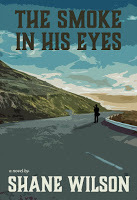
You can find Shane's latest book, The Smoke in His Eyes, at Amazon
About the Author
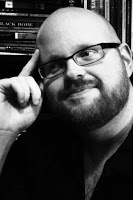
Shane Wilson is an author of magical realism stories. His debut novel, A Year Since the Rain, was long-listed for the 2017 Southern Book Prize. His follow-up novel The Smoke in His Eyes is available now from GenZ Publishing.
Shane is the winner of the 2017 Rilla Askew Short Fiction Prize. His short story "The Boy Who Kissed the Rain," is nominated for a 2018 Pushcart Prize. He has been published in Conclave, Tethered by Letters, and the Stonepile Writers' Anthology, Volume III, and he is a contributor for New York Journal of Books. He is currently at work on a new novel.
Website Blog Twitter Facebook Instagram
An Interview With Shane Wilson

Why don’t you begin by sharing a little about yourself?
Sure! I never really know where to start with this and say something interesting, but we will give it a shot. My brain has always had me in interesting situations. I put myself through college as a mobile disc jockey—DJ Biscuit. I directed a play for a local theater in college—Neil Simon’ Fools. I started publishing short stories and poetry in graduate school (shout out to Valdosta State University), and my first low-fantasy/ magical realism novel, A Year Since the Rain, was published by a small press in 2016.
Why did you decide to write in the low-fantasy/ magical realism genre?
I’ve been thinking a lot about this lately because of my coursework in my MFA program. Low-fantasy and magical realism are not genres that get a ton of buzz right now. All of the low-fantasy genres are getting beat up by our big brother, Fantasy (with a capital F). Hard fantasy is having a big moment right now—Lord of the Rings is getting another adaptation and Game of Thrones is one of the most successful shows on television right now. The one low-fantasy genre that is doing well in publishing right now seems to be urban fantasy. There is clearly a cultural desire for fantastical stories. That being said, I suppose I started writing the particular brand of fantasy that I write because of what I read in graduate school. I had a professor who was really into reading and teaching Salman Rushdie novels. I ended writing about his novels Midnight’s Children and Furyfor my Master’s thesis. I was just exposed to a lot of magical realism, and I studied that aesthetic and the kinds of stories that genre can tell, and I fell in love.
What do you enjoy most about writing in the low-fantasy/ magical realism genre?
The thing that drew me to the genre to begin with was the hybridity of the genre. I have always loved gritty realism, and I have also always enjoyed more speculative works. I grew up on Star Wars and Goosebumps. Finding a genre, like magical realism, where gritty realism intersects with the magical and mystical was a revelation. I love the idea that I can tell stories about people and places that feel very real, and then I can plunge those people and places into something other-worldly. I think it allows me to get at some interesting things about human nature that I couldn’t get to in a story that was all the way in one genre or the other.
Could you tell us a bit about your latest book?

Certainly! The Smoke in His Eyes is about this young guy—a musical prodigy who is technically proficient at guitar and who also has some intense visions that seem to strike at random. He starts making music with this girl in one of his classes at the university. She pushes him to write something original, which ultimately highlights his insecurities. The two musicians go their separate ways and he meets this mysterious visual artist who teaches him how to take his wild and unruly visions and translate them into art.
Why did you write this book? What was your inspiration?
The inspiration for the novel was publishing my first novel. My first novel was largely an accident, but when it was done, I thought I should probably see if someone might like it, so I started to pitch it and I found a publisher for it. I will forever be indebted to the guys at Snow Leopard Publishing for giving my little story a chance. It gave me confidence and assurance.But the longer it was out, the more I started to wonder: who am I? I’m just some guy who sat at a computer long enough to write a novel. Anybody could do that if they wanted to, right? So what makes me special? And what makes my book special enough to assume that anyone would actually want to read it? From that line of questioning, I arrived at the inspiration for The Smoke in His Eyes. The inspiration, then, was wondering about art and artists and why we feel the compulsion to create and ultimately share that creation with the world. The book explores the different reasons people make art and the different places we derive our inspirations.
What did you enjoy most about writing your book?
I love the journey of the writing, ya know? I love to sit down and see the blank page. It’s terrifying, for sure, but it’s also a really exciting time. I like the experience of the story. I am a pantser for sure—I do very minimal plotting before things get started. I know who my protagonist is, and I have some idea about central plot and the decisions he or she will have to make, and I have some idea about where I want to end up. The stuff in the middle is usually a surprise, and it’s a journey that I thoroughly enjoy taking.
What advice would you give beginning writers?
One of the most common reactions to someone finding out that I’m a writer is: “Oh, yeah! I’ve always wanted to write a book.” I’m sure you get that, too. I think we all do. What I tell those people is the same thing that I tell anybody else who I think might actually be serious about wanting to write a book: write it. If you want to write, write. That is the only advice I can give, and it is advice that has been given a million other times in more interesting ways by people more qualified than me. But you either have a story you believe in or you don’t. Park your ass in the chair and write. None of us really know what we are doing our first time at bat. The only way to figure it out is to try.
What do you like to do when you're not writing? Any hobbies?
When I first started writing this book, I decided to try my hand at the guitar. I had never played before. I mean, I played piano when I was a kid, but I didn’t stick with it the way I should have. But I had this idea for a guitarist. I decided I needed to know at least something about what playing guitar felt like before I wrote about it and came off like some jackass who didn’t know what he was talking about. So, I started teaching myself guitar. I’m still not an expert, to be sure, but I’ve really enjoyed it. I play some shows around town these days, and I write songs when the inspiration strikes. Guitar has really given me a nice emotional outlet. Beyond guitar, I enjoy some pretty basic stuff—video games and movies and the like. A lot of my free time is spent working on my MFA these days. That has also been a huge boon to my thinking and creativity.
What’s your next project? Any upcoming book secrets you care to reveal?
I have a third novel drafted and awaiting revision. This third novel is set in the same world and on the same timeline as the first two novels. I am currently working on branding these stories together, so folks can look for more information on that mythology and that world in the near future.

You can find Shane's latest book, The Smoke in His Eyes, at Amazon
About the Author

Shane Wilson is an author of magical realism stories. His debut novel, A Year Since the Rain, was long-listed for the 2017 Southern Book Prize. His follow-up novel The Smoke in His Eyes is available now from GenZ Publishing.
Shane is the winner of the 2017 Rilla Askew Short Fiction Prize. His short story "The Boy Who Kissed the Rain," is nominated for a 2018 Pushcart Prize. He has been published in Conclave, Tethered by Letters, and the Stonepile Writers' Anthology, Volume III, and he is a contributor for New York Journal of Books. He is currently at work on a new novel.
Website Blog Twitter Facebook Instagram
Published on May 31, 2018 05:00
May 23, 2018
Moss and Clay Book Tour: American Legends and Urban Fantasy
Today we are a stop on the Moss and Clay (Book 1 in the Mab’s Doll Series) book tour. I spotlight this new release (out May 26th), a mythological fantasy novel by Rebekah Jonesy, as well as present a guest post by the author. Enjoy.

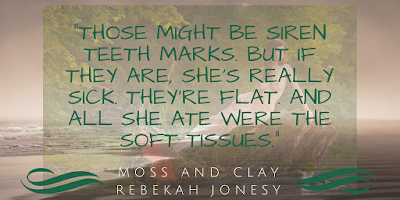
Moss and Clay (Book 1 in the Mab’s Doll Series) by Rebekah Jonesy
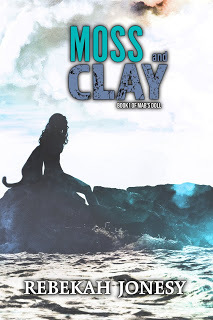
Moss, clay, and blood--that's how Gillian began.
A doll, crafted and given a mission by Danu. Given life by human and Fae blood. First daughter of Mab, Queen of the Fae, Gillian must track down the rogue fae in the Americas and bring them back under Fae Law with only a volunteer kelpie to travel with her.
And no one knows what they’re in for. Not even the gods that sent them.
Get the free prequel story here: https://dl.bookfunnel.com/g7cjknwe9p
The book is available at: Amazon Kindle
on pre-order until May 26th 2018 when it goes live.
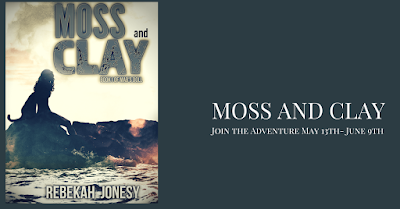
And now for the guest post
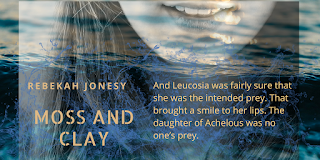
American Legends and Urban Fantasy
America is a crazy, mixed up, wild combination of everything. And I love it. From the food to the language to the legends and ghost stories; America is a tossed salad of everything.
 https://pixabay.com/photo-2756467/
https://pixabay.com/photo-2756467/
And like American salads, that isn’t always a healthy thing.
Because what happens when you run into a four legged creature that stands taller than your car, has rows of sharp teeth, sounds like it has hooves, and is being chased by a thunderstorm? Do you cover your ears? Do you make the sign of the cross? Do you offer it three drops of blood? Or do you make sure you do not make contact of any kind?
Well that depends on if it is a bäckahäst, a kelpie, a nøkk, or a nix. In a land of mixed cultures like America is, it only makes sense that all of their monsters and legends should follow. But if that holds true then how is anyone supposed to know how to identify and protect themselves from the complex variations of imported or domestic legends?
Because of course, America had its own legends and myths before the Europeans came sailing in. What if the four-legged creature wasn’t a creature at all. But was instead a Navajo witch called a skin-walker?
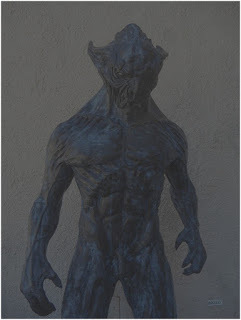 https://pixabay.com/photo-1637646/
https://pixabay.com/photo-1637646/
Let’s just hope it’s a werewolf instead. We all know how to deal with those. Right?
Right?!
But America has a thousand such stories. Some very similar to each other. The White Ladies and La Llorona. Hasn’t everyone heard the ghost story of the local woman that drowned and still walks the river looking for her child? Some of those stories say that if she notices you she will start to scream and wail and you’ll be frozen in place, just like the banshees of Scotland.
We’re Americans though, so we don’t just stick to the old stories. Instead we make up new ones. The black eyed children that have to be invited in to do God knows what to you. The Slenderman myth that took on such a brutal life of its own when two girls committed murders to appease him. The Rake that sits at the foot of your bed and steals your ability to move and possibly even your life force. The black dog that chases down truckers and is an omen of imminent death. These are all new legends, birthed by Americans themselves. We have so many now that we even created a new term that covers all of them. Creepy Pasta.
It’s a crazy, mixed up, wild combination of everything. And I love it. Which is why I started a new urban fantasy series to address as many as possible. I’m not just relying on myself, though. I’ve started a Facebook group where we can all tell and share the stories we know and love. And I would love it if you would join me. Share your stories and read mine. Cause how else are you going to learn the difference between a pooka and a nix?

About the Author
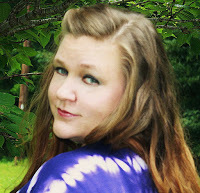
Rebekah Jonesy knows stuff about things and isn't afraid to talk and write about it. Outside of the literary world, she is a mad scientist cook, gardener, Jill of all trades, and military spouse. Inside the literary world she is a devourer of books, publisher, and mentor.
“Rebekah has the best kind of rabies”- JD Estrada You can follow author Rebekah Jonesy at Twitter, Facebook, join her reader’s group, or her blog Heart Strong.
You can sign up for her newsletter here: Newsletter
Or check her out on Amazon, Goodreads or Smashwords
And of course you can find her books here for the free prequel to Mab’s Doll or grab your copy of the first book of the series, Moss and Clay
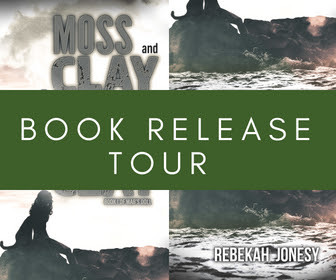
And check out the other awesome stops in the Moss and Clay tour.
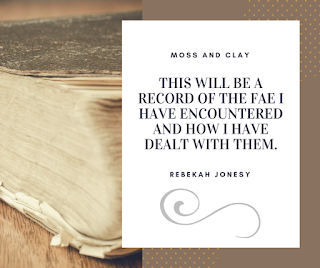


Moss and Clay (Book 1 in the Mab’s Doll Series) by Rebekah Jonesy

Moss, clay, and blood--that's how Gillian began.
A doll, crafted and given a mission by Danu. Given life by human and Fae blood. First daughter of Mab, Queen of the Fae, Gillian must track down the rogue fae in the Americas and bring them back under Fae Law with only a volunteer kelpie to travel with her.
And no one knows what they’re in for. Not even the gods that sent them.
Get the free prequel story here: https://dl.bookfunnel.com/g7cjknwe9p
The book is available at: Amazon Kindle
on pre-order until May 26th 2018 when it goes live.

And now for the guest post

American Legends and Urban Fantasy
America is a crazy, mixed up, wild combination of everything. And I love it. From the food to the language to the legends and ghost stories; America is a tossed salad of everything.
 https://pixabay.com/photo-2756467/
https://pixabay.com/photo-2756467/And like American salads, that isn’t always a healthy thing.
Because what happens when you run into a four legged creature that stands taller than your car, has rows of sharp teeth, sounds like it has hooves, and is being chased by a thunderstorm? Do you cover your ears? Do you make the sign of the cross? Do you offer it three drops of blood? Or do you make sure you do not make contact of any kind?
Well that depends on if it is a bäckahäst, a kelpie, a nøkk, or a nix. In a land of mixed cultures like America is, it only makes sense that all of their monsters and legends should follow. But if that holds true then how is anyone supposed to know how to identify and protect themselves from the complex variations of imported or domestic legends?
Because of course, America had its own legends and myths before the Europeans came sailing in. What if the four-legged creature wasn’t a creature at all. But was instead a Navajo witch called a skin-walker?
 https://pixabay.com/photo-1637646/
https://pixabay.com/photo-1637646/Let’s just hope it’s a werewolf instead. We all know how to deal with those. Right?
Right?!
But America has a thousand such stories. Some very similar to each other. The White Ladies and La Llorona. Hasn’t everyone heard the ghost story of the local woman that drowned and still walks the river looking for her child? Some of those stories say that if she notices you she will start to scream and wail and you’ll be frozen in place, just like the banshees of Scotland.
We’re Americans though, so we don’t just stick to the old stories. Instead we make up new ones. The black eyed children that have to be invited in to do God knows what to you. The Slenderman myth that took on such a brutal life of its own when two girls committed murders to appease him. The Rake that sits at the foot of your bed and steals your ability to move and possibly even your life force. The black dog that chases down truckers and is an omen of imminent death. These are all new legends, birthed by Americans themselves. We have so many now that we even created a new term that covers all of them. Creepy Pasta.
It’s a crazy, mixed up, wild combination of everything. And I love it. Which is why I started a new urban fantasy series to address as many as possible. I’m not just relying on myself, though. I’ve started a Facebook group where we can all tell and share the stories we know and love. And I would love it if you would join me. Share your stories and read mine. Cause how else are you going to learn the difference between a pooka and a nix?

About the Author

Rebekah Jonesy knows stuff about things and isn't afraid to talk and write about it. Outside of the literary world, she is a mad scientist cook, gardener, Jill of all trades, and military spouse. Inside the literary world she is a devourer of books, publisher, and mentor.
“Rebekah has the best kind of rabies”- JD Estrada You can follow author Rebekah Jonesy at Twitter, Facebook, join her reader’s group, or her blog Heart Strong.
You can sign up for her newsletter here: Newsletter
Or check her out on Amazon, Goodreads or Smashwords
And of course you can find her books here for the free prequel to Mab’s Doll or grab your copy of the first book of the series, Moss and Clay

And check out the other awesome stops in the Moss and Clay tour.

Published on May 23, 2018 05:00



